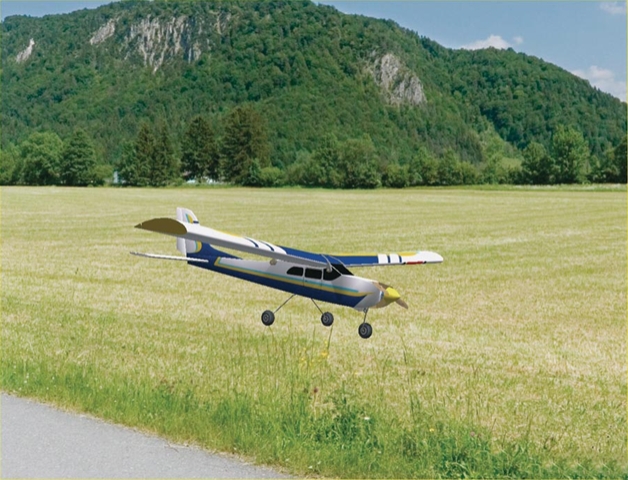
Friday Fanboy Followup: RC Flying Simulators
Chris Anderson
The Long Tail
February 10, 2007
I mentioned in my RC model airplane primer [ http://www.longtail.com/the_long_tail/2007/02/friday_fanboy_r.html ] last week that it could be a mighty expensive hobby given how costly the planes are and how often and catastrophically they crash. Well, I'm pleased to report I've found a better way than pay-and-prong to improve your skills and to experiment with more challenging aircraft. RC model flight simulators are a revelation. They're every bit as good as full-size aircraft simulators and because they use a version of a standard RC transmitter as the controller, they're a lot closer to the real thing.

We just got the RealFlight Simulator [ http://towerhobbies.com/products/realflight/gpmz4405m.html ] and it's fantastic. First, it's terrific fun--better than almost any videogame. Second, it looks amazing (click on the image above for a larger view--that's a real screen grab from a flyby!). Third, it's a great way to try different airplanes, helicopters and sailplanes at no cost, which will satisfy a lot of curiosity without a lot of pain.
Most of the planes are based on real models you can buy, and the physics engine the simulator uses is jaw-droppingly realistic. Even the crashes use physics to make the model break apart in just the way it really would. Every time a lovingly-detailed scale Mustang splinters after a bad landing, you can calculate what it would have cost to learn that lesson in the real world. Seen that way, even at a pricey $180 (after rebate), you'll still be saving money in airplane crashes avoided and inappropriate models not purchased.

The USB controller (right) has a simulated eight channels, so you've got fun extras such as retractable landing gear and flaps to use on some planes. If you've got a proper RC transmitter, you can also plug that in and use it instead--the supplied controller acts as a USB bridge.
We had the three oldest kids taking turns on the simulator all morning on a rainy day hooting and giggling at spectacular saves and even more spectacular crashes. Meanwhile, it was amazing to watch their skills improve. By lunch, the eight and nine year olds could do basic acrobatics and reliably land in everything from high-wing trainers to biplanes (landing jets reliably is still a bit outside all of our abilities).
One final note about the knockout graphics. Some of the fields are the most photorealistic things you've ever seen on screen. That's because they're actually 360-degree panoramic photos at very high resolution. The reason the RC simulator can have better graphics than even Microsoft Flight Simulator is because your viewing position never changes. The plane moves and your gaze follows it around the sky, but your feet don't budge. This integration of polygons (just the plane and some of the structure on the field) and high-resolution photography means that you have unprecedented visual quality without requiring a super high-end computer. Smart.
The simulator also includes a lot of traditional fully-rendered 3D fields, which don't look quite as good but allow you to also use in-cockpit and chase-camera views, along with having interactive elements such as obstacle courses and a fun carnival. They're also enormous, spanning some 5,000 square miles.
$180 may sound like a lot of money, but if you're serious about trying RC you've got to get this. It's no substitute for your first trainer, but it's by far the best way to build your skills and find your style beyond that. And if you've been eyeing RC helicopters, you'd be insane not to try them out on a simulator before spending hundreds of dollars on these most challenging and counterintuitive flying machines. It will pay for itself with your first lesson not learned the hard way.
Copyright 2007 http://www.thelongtail.com/